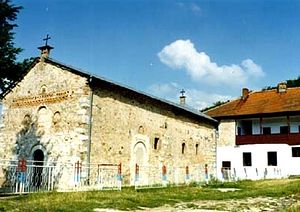
|
| The Holy Trinity Monastery before its destruction. |
This monastery was founded in the fourteenth century. The monastery's synodic (prayer list of patrons) began in 1465, and earlier, a priceless collection of hand-written books from the fifteenth to eighteenth century were preserved in its library. During Turkish rule, the monastery was desecrated many times, but monastic life never died there. Not far from the monastery, in the forest, isolated cells can still be found—a witness to the prayerful labors of the monastery's inhabitants.
Twelve years ago, in 1999, even before the NATO bombardment and military activity, eight nuns lived in the monastery, headed by Abbess Katarina (Vuyasic). After the signing of the Kumanovsky Agreement in 1999, the Serbian army and police abandoned Kosovo and Metohija, Albanian soldiers (the KLA) poured into the area from the Albanian border, and terror was unleashed against the Serbian population and its churches.
The monastery was under threat of an attack, which could happen any moment. On June 12, 1999, the last Liturgy was celebrated in the monastery. The sisters received Holy Communion, and with the blessing of their bishop, were evacuated to Gracanica, taking with them the holy relics and antimension. On the same day, the Serbian population of the village of Musuciste abandoned their native region in order to save their lives.
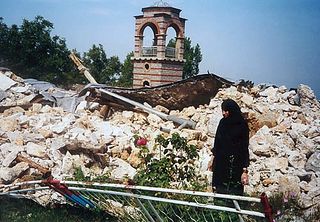 |
Any attempts to visit the desecrated holy site were always subject to danger. Now the monastery of the Holy Trinity is one of two monasteries, the other being Binac, which is still in ruins. After his appointment as bishop of the Rasko-Prizren diocese, His Grace Theodosy has expended no little effort to begin the restoration of these holy places.
On June 12, 2011, the feast of Pentecost, the Divine Liturgy was celebrated on the monastery ruins. With the blessing of Bishop Theodosy, Hieromonks Andrei and Peter from the monastery of Vysoki Decani served on the very antimension that the nuns had saved. Over 500 Serbs gathered to pray at the desecrated monastery, most of whom had come from the local community of Suva Reka. After the Liturgy, a moleben with the blessing of waters was served, and the festal kolach (bread) was shared.
The region of Suva Reka and surrounding villages is a land with a rich Christian tradition. Besides the monastery of the Holy Trinity and the ruined church of the Hodigitria Mother of God in Musuciste, there were also nine medieval churches here. In the nearby village of Recani, a medieval church of St. George stood until 1999; its ruins were visited in 1999 by UNESCO. After the tragic events of the summer of 1999, not a single Serb was left in the entire community of Suva Reka, and all the Serbian homes and churches were methodically destroyed. Despite their efforts and fervent desire to return to their native land, the Serbian refugees have not yet been able to do so.
"We still have hope," states a communiqué in the Rasko-Prizren diocese, "that the celebration of the Divine Liturgy, which prayerfully revived the monastery of the Holy Trinity, will be followed by other steps leading to a popular and spiritual rebirth, and Serbian return to this land."
* * *
We offer for our readers' attention this small photo report, prepared by the information service of the Raska-Prizren Diocese.
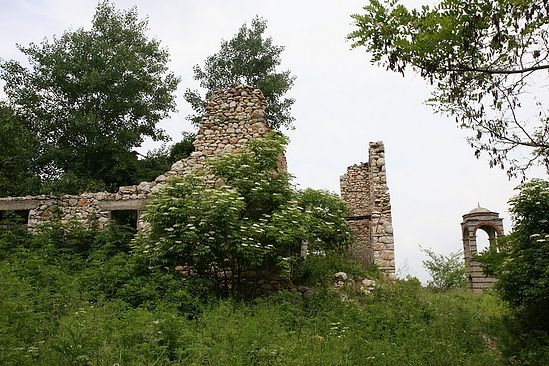 |
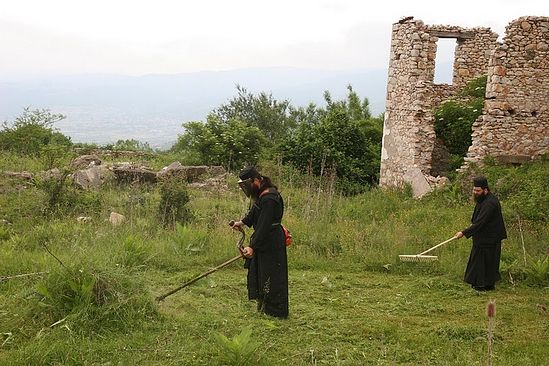 |
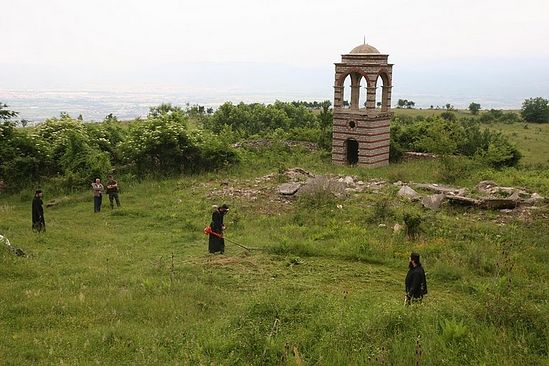 |
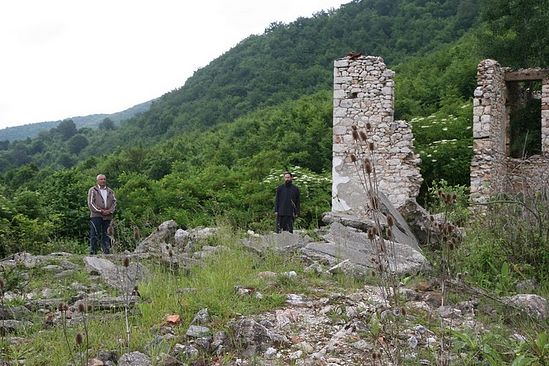 |
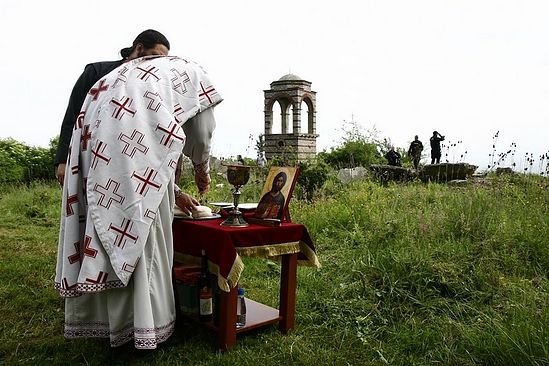 |
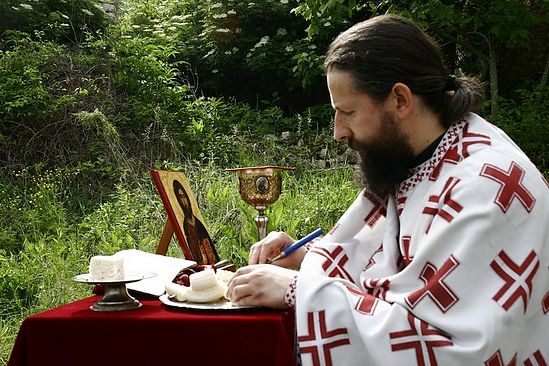 |
| Hieromonk Peter |
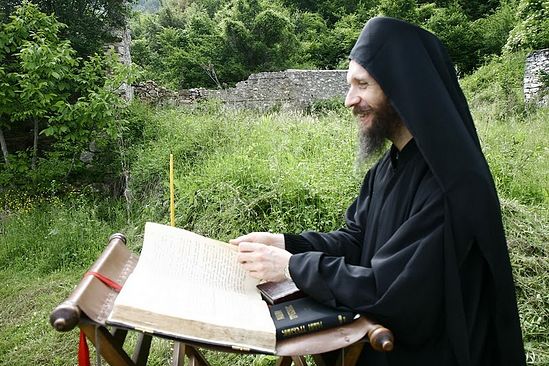 |
| Blind chanter, Monk Isaiah |
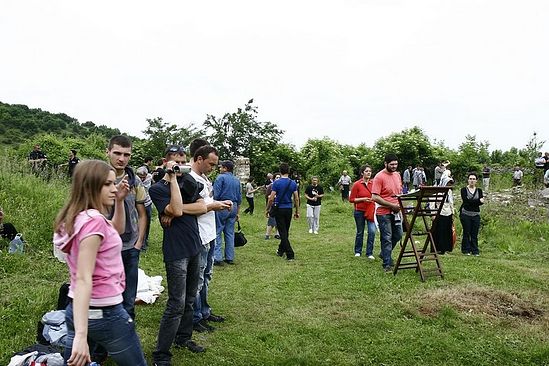 |
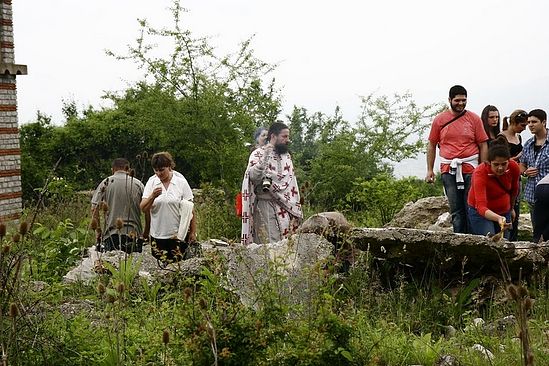 |
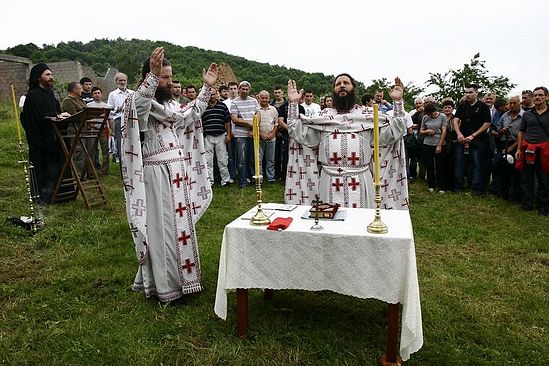 |
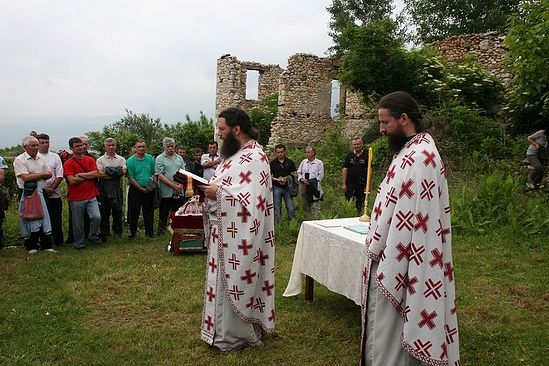 |
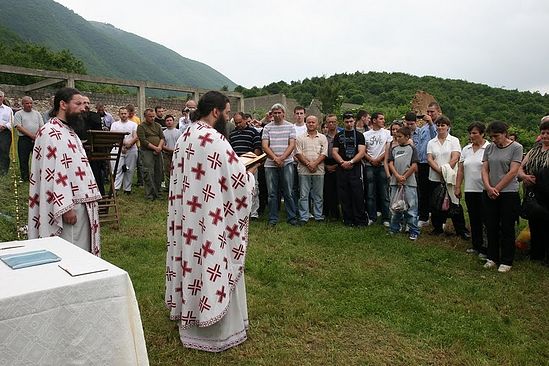 |
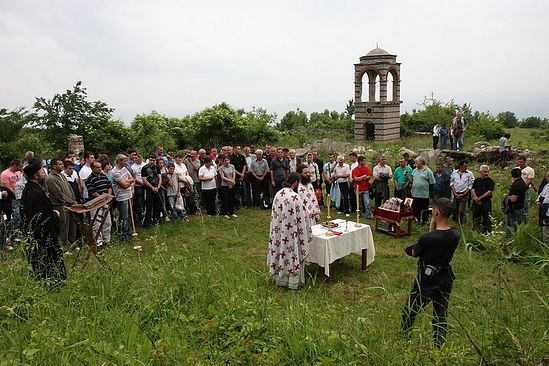 |
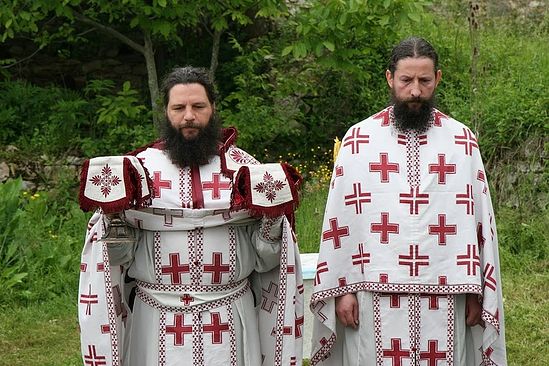 |
| Hieromonk Andrei and Hieromonk Peter |
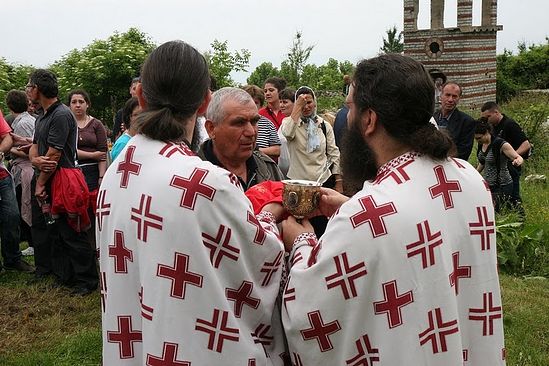 |
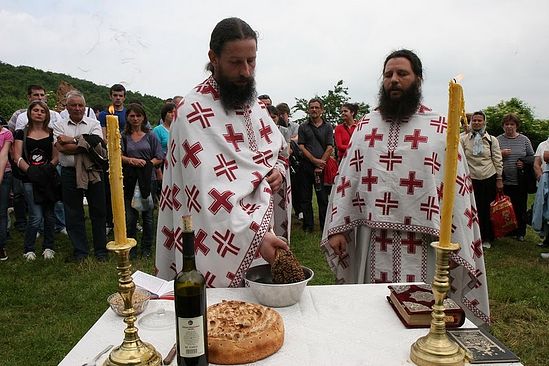 |
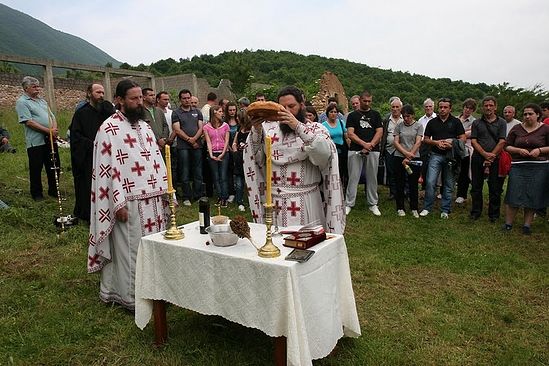 |
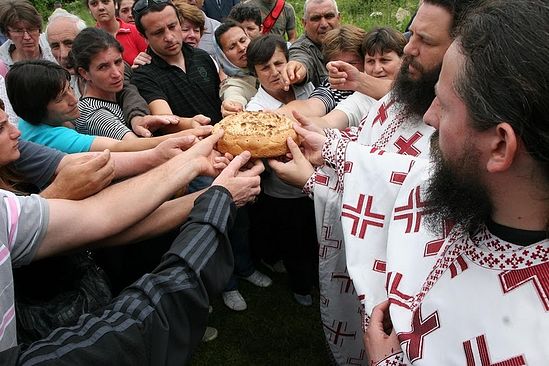 |
| The Slava kolach |
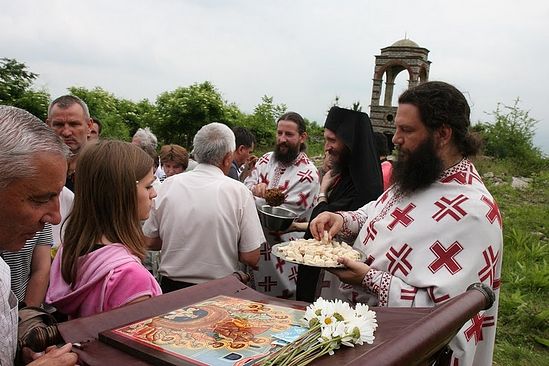 |
 |
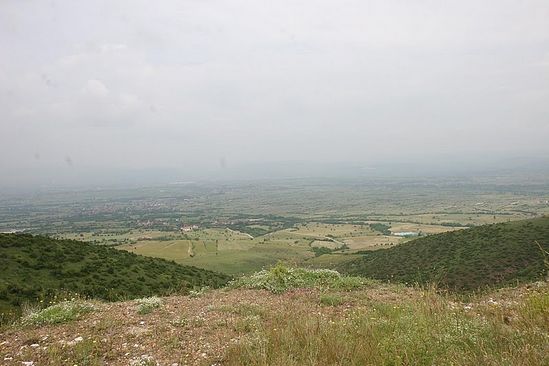 |
